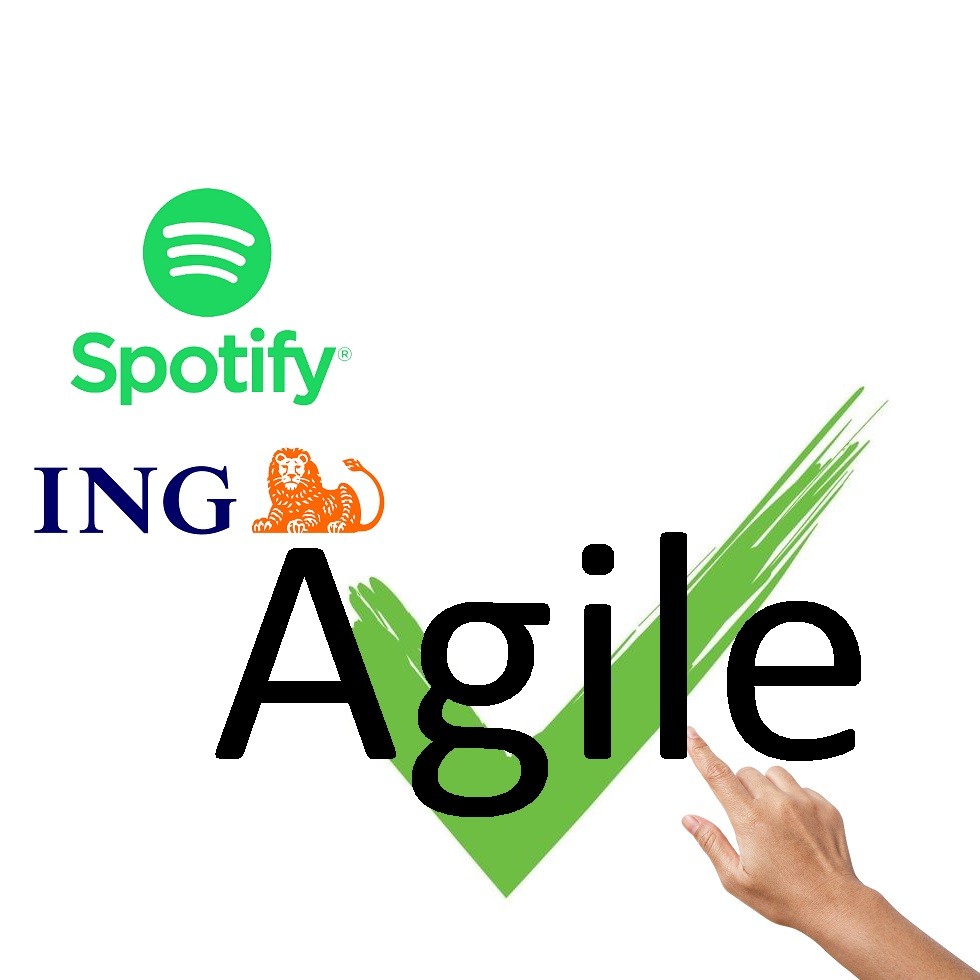In the heart of Silicon Valley, where relentless innovation is the norm, a booming startup got itself stuck. Despite their cutting-edge tech, they were consistently bogged down by outdated operational processes. As projects lagged and frustrations escalated, the need for Agile Process Improvement became glaringly evident, prompting a pertinent question:
How can we reinvent our processes without disrupting the core of our operations?
This isn’t just their story; it’s a reflection of countless businesses globally. Enter Agile Process Improvement. This isn’t about tossing old playbooks but evolving them. Imagine merging the dynamism of agile methodologies with the meticulousness of process automation. This blend not only addresses the challenges in traditional process improvement but propels businesses into an era of unparalleled efficiency and adaptability. Intrigued? Journey with us as we delve into a world where Agile tools supercharge process optimization, and continuous improvement isn’t just a catchphrase but a tangible reality. The future of business efficiency beckons. Are you ready?
Discovering the Power of Agile Process Improvement: The New Frontier
Fierce competition is the norm today. The acceptable margin for error narrows with each passing moment. The quest for efficiency and optimization remains paramount. Amidst a multitude of methods and tools, a beacon emerges, tailored for the Agile age: ProcessAgilist.
As my consulting clients grappled with antiquated process improvement ideologies one after another, I developed this transformative potential of agile intervention. My years as a software developer using agile methodologies to develop workflow automation inspired me to create a space where these two realms could coalesce.

“Why the emphasis on Agile?” one might ask. With companies running at “internet speed”, agility transcends being a mere buzzword—it anchors successful operations. We’ve transitioned from cumbersome, static systems to embracing flexibility and adaptability. Agile methods, once mainly tethered to software development, have now demonstrated their efficacy across diverse business arenas. Through this site, I not only advocate for agility but also showcase its transformative potential, having observed organizations morph from traditional frameworks into dynamic, agile entities.
My dedication to this cause extends beyond mere advocacy; it’s rooted in the tangible benefits agile offers. Over the years, I’ve gathered compelling success stories and case studies that bear testament to the prowess of Agile Process Improvement, from eliminating operational bottlenecks to creating a culture empowered by the Transformative Trust Trinity to steer their organization to success.
However, the vision of ProcessAgilist isn’t just retrospective. It’s a forward-thinking platform, aiming to lead businesses into a golden era of process excellence. With a trove of agile tools, insights into process optimization, and a genuine passion for business agility, I aspire to reshape the way organizations approach and enact process enhancement.
In essence, this isn’t merely a platform—it symbolizes a transformative journey. It stands as a call to action for businesses to revisit their process strategies, shedding old paradigms and embracing a future characterized by agility. Welcome to the journey of process excellence.
Process Optimization in the Agile Age
In the annals of business history, process improvement has been a constant endeavor. Every enterprise, no matter its size or sector, has grappled with refining operations, streamlining workflows, and enhancing output quality. But as times have evolved, so too have the methods we’ve adopted to achieve these aims. Not too long ago, businesses heavily leaned on traditional process improvement frameworks—rigid, time-consuming, and often bereft of adaptability. These methodologies, though effective in their prime, started showing cracks in a dynamic business environment. Enter the world of Agile, and the landscape of process improvement underwent a seismic shift.
“Agile” became more than just a buzzword—it marked a paradigm shift in how organizations approached change. Where traditional frameworks were linear and sequential, Agile process improvement was iterative and incremental. It championed short feedback loops, cross-functional collaboration, and a customer-centric focus. But what was the catalyst behind this revolution?
Firstly, the conventional methods lacked the ability to rapidly respond to market changes. Their lengthy life cycles meant that by the time a solution was implemented, market dynamics might have already shifted. Agile, with its sprint-based approach, offered businesses the nimbleness they craved. Firms could test, learn, and adapt in real-time, ensuring that solutions remained relevant and effective.
Moreover, the tangible benefits of integrating Agile methodologies became hard to ignore. Organizations reported heightened business efficiency and faster time-to-market, not just for products but for optimized processes as well. Real-life success stories started emerging, painting a vivid picture of transformation. Consider the case of a renowned financial institution that faced increasing backlogs and customer dissatisfaction. By integrating agile practices into their process improvement strategy, they reduced backlog by a staggering 60% within mere months. Or, take the example of a healthcare provider, previously plagued by outdated patient care processes. Upon adopting Agile, they witnessed not just quicker process iterations, but also a substantial uptick in patient satisfaction.
Another pivotal moment was the surge in process automation. As businesses strived for continuous improvement, automation stood out as the beacon of business agility. But to harness its full potential, a flexible approach was paramount. Agile tools and frameworks provided the perfect bedrock, allowing organizations to weave automation seamlessly into their processes. This union brought forth a new era of Agile Process Improvement, where processes didn’t just improve; they evolved.
However, as with any revolution, challenges were aplenty. Some firms found it daunting to transition from their deep-rooted traditional practices. Others grappled with understanding the essence of Agile, often mistaking it for just another set of tools, rather than a mindset.
Yet, for those who embraced the Agile wave, the rewards were manifold. It was no longer about just improving processes—it was about reimagining them in a world where change was the only constant.
Streamlining Business Efficiency: When Agile Process Improvement Meets Automation
In a bustling cityscape, a once-prominent business enterprise, let’s call it Acme Corp., found itself fading into irrelevance. Their order management process, relying heavily on outdated manual systems, became a bottleneck in delivering timely service. Orders took days, sometimes even weeks, to process. Bottleneck analysis revealed that staff were overwhelmed by paperwork and data entry tasks. It was clear that Acme Corp. was stuck in the past, struggling to attain operational excellence.
It’s a familiar story for many enterprises, isn’t it? They recognize the importance of streamlining processes but are often unsure of where to begin. Enter the fusion of agile process improvement with process automation—a paradigm shift that is changing the game for businesses worldwide.
Agile has expanded its reach. It now plays a pivotal role in process improvement. Agile methodologies focus on making process changes swiftly and iteratively. This iterative approach can be seamlessly paired with the power of process automation, laying the foundation for efficient process optimization using agile.
Imagine if Acme Corp. adopted this approach. Instead of piles of paperwork, automated task management would virtually eliminate repetitive tasks. For instance, integrating an automated order management system would allow real-time tracking, reducing process time from weeks to mere hours. Furthermore, if a new market demand emerges or there’s a shift in consumer behavior, the agile aspect ensures the system can adapt without starting from scratch.
This synergy between agile methodologies and process automation offers several tangible benefits:
- Speed and Efficiency: Automating routine tasks can cut down process times significantly. By combining these cost reductions with the feedback loops of agile, businesses can ensure they’re not just fast, but also relevant.
- Reduced Errors: Human error, especially in repetitive tasks, can be costly. Automation ensures accuracy, and agile methodologies ensure continuous feedback and refinement, further reducing the margin for error.
- Cost Savings: While there’s an initial investment in setting up automated systems, the long-term benefits in terms of time saved, errors avoided, and increased productivity make it a cost-effective move. The agility ensures that businesses can pivot without making significant new investments.
- Empowering Employees: With automation taking over routine tasks, employees can focus on more strategic, creative aspects of their roles, leading to higher job satisfaction and innovation.
- Business Agility: Agile process improvement is not just about speed; it’s about moving in the right direction. Process automation, when iteratively refined using agile principles, ensures businesses remain on the right track, adapting as the market evolves.

While Acme Corp. is a hypothetical example, real-world enterprises are reaping these benefits. Companies like Spotify and ING have integrated agile methodologies into their business processes, not just software development, seeing dramatic improvements in efficiency and adaptability.
In essence, the merger of agile with process automation is like equipping a business with a compass and a jetpack. The agile methodologies provide direction (business agility), ensuring companies are moving towards their true north. Simultaneously, automation provides the speed and efficiency, ensuring they get there in record time. It’s a match made in the modern business heaven.
Embracing Agile Processes: The ProcessAgilist Vision
Again and again at my consulting clients, I noticed an essential gap: while many talked about agile methodologies and process improvement, virtually none had mastered the art of integrating the best practices of both. Thus, ProcessAgilist was born out of a genuine desire to help businesses flourish using the potent blend of agile and efficient processes.
So, why the emphasis on marrying agile with process improvement? As businesses dive deeper into the digital era, it becomes clear that agility isn’t just a methodology but a necessity. It’s about creating responsive, adaptive systems that can meet the challenges of a rapidly evolving marketplace.
As the driving force behind ProcessAgilist, I promise my readers a plethora of insights and knowledge. Expect deep dives into topics like the intricacies of using agile methodologies in contemporary business settings, and the benefits of harnessing agile tools for effective process optimization. While this journey began solo, the goal has always been to share and grow together with like-minded individuals passionate about improving business operations.
Looking forward, each article will not just offer theoretical concepts but tangible, actionable steps and solutions rooted in real-world experiences. Because the beauty of the agile world is not just in knowing but in implementing.
But ProcessAgilist isn’t just a platform—it’s a dialogue. I encourage you, my readers, to be active participants. Share your challenges, ask questions, suggest topics, and let’s evolve together. In the realm of agile and process improvement, learning is an ongoing journey. I invite you to walk this path with me, exploring the myriad ways we can elevate every process and truly deliver agile excellence.
Leading Process Optimization: Dive into the Agile Revolution
Simply following processes isn’t enough today; revolutionizing them is when the true digital transformation happens. As you journey through this exploration of Agile Process Improvement, you’ll see the immense potential of agile methodologies, especially when it comes to redefining modern businesses. But this is merely the tip of the iceberg. There’s so much more to uncover, to learn, and to implement. And I invite you to be at the forefront of this transformative journey.
By subscribing to ProcessAgilist, you gain direct access to the latest insights, strategies, and actionable tips focused on business efficiency and continuous improvement. Have insights on how to use agile for process improvement? Or perhaps questions on navigating challenges with traditional methodologies? Your voice, experiences, and questions will enrich this platform, shaping it into a dynamic hub for all things agile.
And remember, by connecting and engaging on various platforms, you’re ensuring you stay updated with every new piece of knowledge I share. The future of agile process improvement is automated and incredibly efficient. Are you ready to be part of this process revolution? Let’s embark on this journey of agile excellence together.
Your Agile Process Optimization Blueprint
It’s not about our journey; it’s about yours.
- Discover: Dive deep into case studies, best practices, and tools that have transformed businesses.
- Implement: Use our step-by-step guides and interactive tools to integrate Process Automation and Agile Methodologies into your workflows.
- Optimize: Continuously refine your processes for maximum efficiency and customer value.
Fast-Track Your Process Optimization with Agile Methodologies
- Lay a Strong Foundation with Impactful Initiatives:
- Start Small, Think Big: Choose a high-impact, manageable process. This will serve as a prototype for broader implementations.
- Model Process Selection: Pick a core business process that can highlight the benefits and efficiency of merging agile and automation.
- Optimize for Efficiency and Team Productivity:
- Automation’s Prime Candidates: Directly align with agile’s focus by automating repetitive and time-consuming tasks, freeing up teams for more value-driven work.
- Iterative Refinement: Harness the power of agile feedback, ensuring strategies are continuously refined for optimal operations.
- Cultivate the Agile Culture Across Operations:
- Mindset Over Method: Embrace an agile mindset, not just the methodologies. Promote a culture of experimentation and continuous learning in process improvement.
- Incentivize Agile Innovations: Recognize and reward teams that showcase agile principles in their innovative process improvements, further fostering the Agile culture.
- Streamline Tools and Processes for Consistency:
- Standardize for Momentum: Ensure agile rhythm is uninterrupted by standardizing automation tools across projects. This simplifies process analysis and promotes consistent efficiency.




